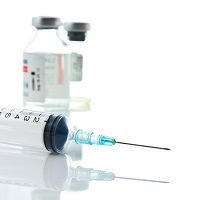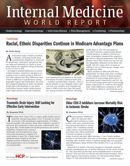Publication
Article
Internal Medicine World Report
School-administered Influenza Vaccinations Reduce Disease Spread
Author(s):
Children who are vaccinated for influenza indirectly reduced others' chances at contracting the disease, according to findings published online December 9, 2014 in PLOS ONE.

Children who are vaccinated for influenza indirectly reduced others’ chances at contracting the disease, according to findings published online December 9, 2014 in PLOS ONE.
Researchers from the University of Florida examined 2011-12 and 2012-13 influenza seasons’ data to determine whether school located influenza vaccination (SLIV) programs reduced the community risk of influenza and influenza like illness (ILI) associated emergency care visits. The researchers estimated age group specific attack rates (AR) for ILI from surveillance and census data. This was done for the 12 county region surrounding Alachua County and all non-Alachua counties in Florida.
About half of children in Alachua County aged 5 to 17 years were vaccinated through their school based programs. This decreased their risk of ILI associated emergency care visits by 79% and 71% compared to the non-Alachua counties group in 2011-12 and 2012-13, respectively.
“The effect of a school based vaccination was profound, both on the students and on the community,” the study’s lead author Cuc Tran, a doctoral student in public health at UF, said in a press release.
The researchers concluded the greatest indirect effect was seen in 0-4 year olds, whose collective AR was reduced by 84 and 93 percent in influenza and ILI, respectively, in 2011-12 and 79 and 88 percent in influenza and ILI, respectively, in 2012-13. Non-school aged residents of those communities were estimated to be effected indirectly by 54 and 65% in influenza and ILI, respectively, in 2011-12 and 31 and 41% in influenza and ILI, respectively, in 2012-13. For all age groups in 2011-12, indirect effectiveness was estimated to be 61% for influenza and 42% for ILI. The following year for the same demographic, the estimated indirect effectiveness was 70 percent for influenza and 50 percent for ILI.
“Flu is the last pandemic killer of mankind,” the co-founder of the study Parker Small, Jr., MD, explained in the press release. “Just look at all of the energy devoted to thinking and planning about Ebola. If that same energy was put into flu, you could be saving thousands of lives and billions of dollars.”
The SLIV pilot program began in Alachua schools in conjunction with UF and the Florida Department of Health and provided free influenza vaccines, delivered via nasal spray, to public school students. The press release continued that babies younger than 6 months are still susceptible to the flu but cannot be vaccinated, as well as people with health conditions that prevent vaccinations.
“It allows us to protect those who can’t otherwise be protected,” Tran said of the indirect effects of SLIV programs. “Stakeholders in school districts see the connection between health and learning. You’re able to keep staff in school and parents at work.”
Children who get the flu remain sicker longer and spread more of the virus through their imperfect hygiene habits, the study continued. School age children interact with more people on a day to day basis, and therefore are even more likely to infect others.






